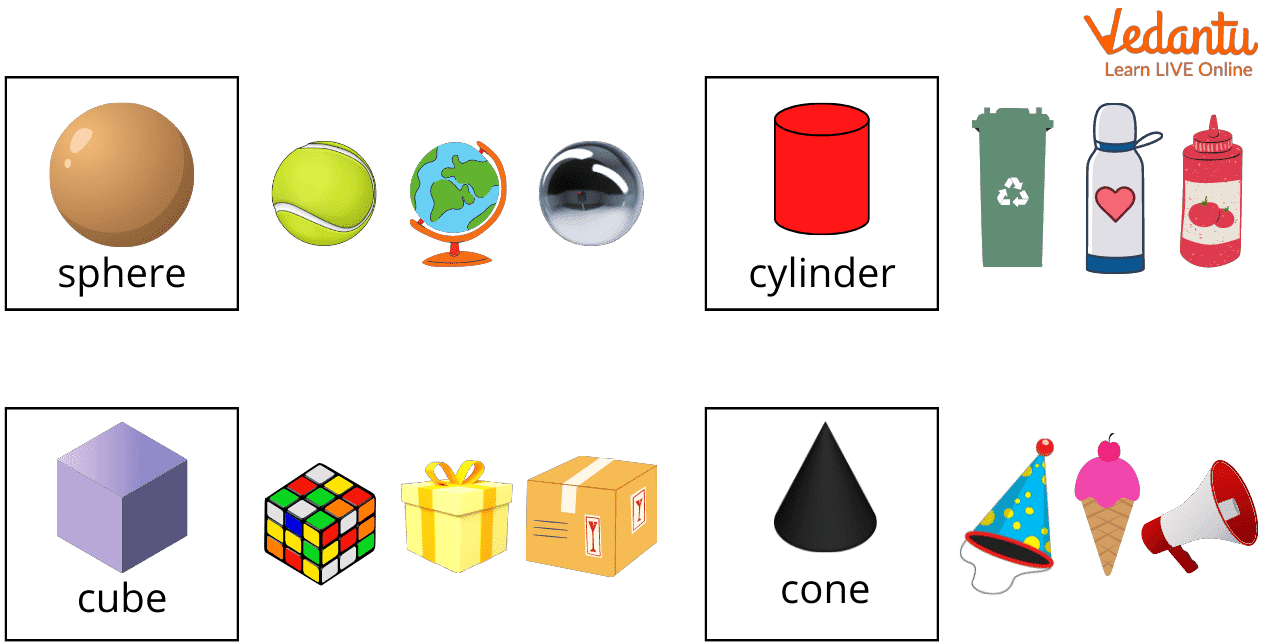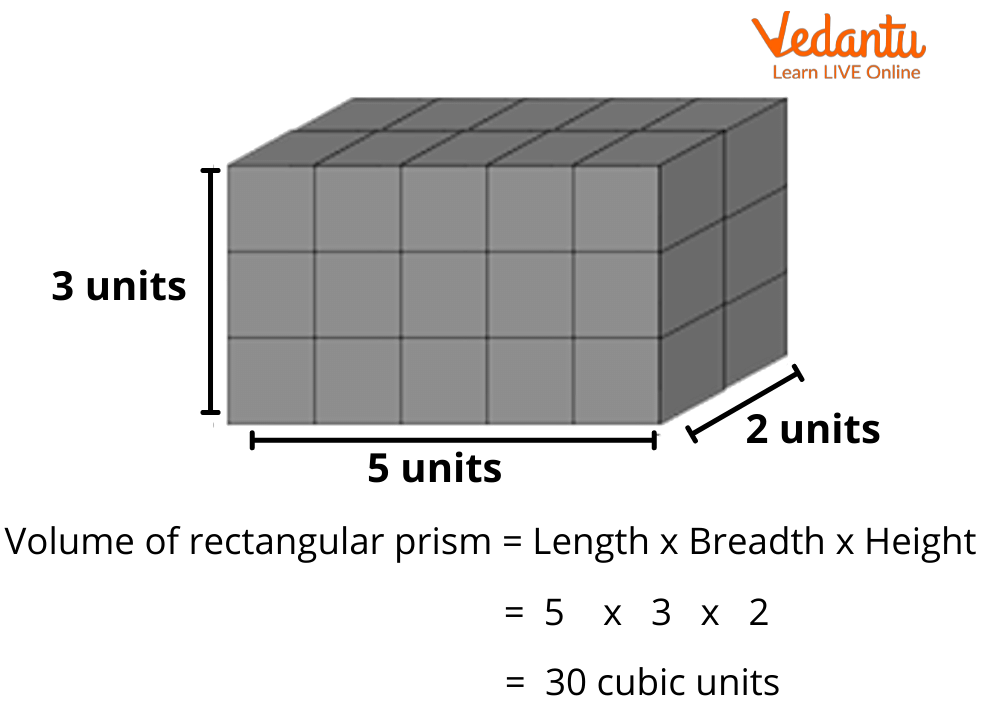




How to Calculate Volume: Simple Steps and Practical Examples
Have you ever wondered why a football looks bigger than a tennis ball, or why a lake looks bigger than a bucket of water? It is because of the difference in their volumes. Volume is defined as the amount of space occupied by an object that is bound by a boundary. It must be noted that the volume is a mathematical term that is only applicable to 3D (three-dimensional) objects or spaces. As such, the units commonly used for volume are cubic units, that is, m3, cm3, in3, etc.
How Can We Find the Volume of Different Shapes?
Different geometric shapes have different volumes. The common 3D shapes that we come across in our daily lives are cubes, cuboids, spheres, cylinders, cones, etc.

Real Life 3D Objects
In case of shapes having a flat surface, such as a cube or a cuboid, it is easy to find the volume. However, for curved shapes, like cones, cylinders, and spheres, it is required to consider the dimensions of their curved surfaces as well. For instance, their radii or diameters.

How to Calculate the Volume of a Prism?
The following is a table containing the formulas of volume for some commonly known regular shapes:
Sample Solutions for Finding Volume
Question 1: Determine the volume of a cube if its side length equals 3 cm.
Solution: It is given that the length of the cube = 3 cm.
As we know,
Volume of cube = Side3
Thus,
Volume of a cube with 3 cm length = 33 cm3
Volume = 27 cm3
Question 2: What is the volume of a cone if its radius is 2 cm and height is 5 cm?
Solution: It is given that the radius of the circular base of a cone = 2 cm
And the height of the cone = 5 cm
As we know,
Volume of cone = ⅓ πr2h
Volume = ⅓ π (2)2 (5)
Volume = ⅓ x 22/7 x 4 x 5
Volume = 20.95 cm3
Question 3: If the volume of a cube is 512 cm3, what will be its surface area?
Solution: Since a3 = 512
Therefore, a=∛(512)
a=8 cm
Surface area of Cube= 6a2
=(6 x 82 ) cm2
=384 cm2
Question 4: Calculate the volume of a hemisphere that has a radius of 3 cm.
Solution: Volume of the hemisphere = (2/3)πr3
= (2/3) x π x 33
= (2/3) x π x 27
= 18π cm3
Irregular Solids
Solids that do not have definite shapes or measurements are called irregular solids. Such solids do not usually have fixed formulas that can be used to determine their volumes. However, there are different ways to obtain such volumes, one of which is the liquid displacement method, which is based on the Archimedes Principle.
The method involves submerging an irregular solid in a container that is filled up to the brim with any liquid whose weight and volume are already known. The volume of liquid that is displaced will therefore be the required volume of the irregular solid. The said volume can be determined by pouring this displaced water into a container of regular shape, and it can be measured up.
Few Things to Note While Studying about Volume
Since all sides of a cube are equal, the volume will be equal to the cube of the length of its side.
In a case where the radius and height of a cone and a cylinder are the same, the volume of the cone will be equal to one-third of the volume of the cylinder.
The formulas of the volumes of a cuboid and a rectangular prism are the same.
The volume of a prism depends on the shape of its base. For instance, if the base is a square, the volume will be side2 x height.
Conclusion
To sum up, the capacity of an object to occupy three-dimensional space is known as its volume. The volume of certain regular objects is generally formulated as the product of the base and height of the objects. However, not all volumes of regular objects can be calculated in this manner. Also, finding the volume of irregular objects or masses that do not have a definite shape can be tricky, for which the liquid displacement method comes in handy.
FAQs on What Is Volume in Maths?
1. What is the definition of volume in mathematics?
In mathematics, volume is the measure of the three-dimensional space occupied by a solid object or a substance. It quantifies how much space an object takes up. For hollow objects, it can also refer to its capacity, which is the amount of substance (like liquid or gas) it can hold. It is always measured in cubic units.
2. What are the standard units for measuring volume?
The standard units for measuring volume depend on the system of measurement. The SI (International System) unit for volume is the cubic metre (m³). However, other common units are frequently used, especially for smaller objects or liquids, including:
- Cubic centimetres (cm³)
- Litres (L)
- Millilitres (mL)
It's important to remember that 1 mL is equivalent to 1 cm³.
3. What is the difference between volume and capacity?
While often used interchangeably, volume and capacity are distinct concepts. Volume refers to the total three-dimensional space an object occupies. For example, the volume of a solid brick is the space it takes up. Capacity, on the other hand, refers to the maximum amount of a substance a hollow object can hold. For instance, the capacity of a water bottle is the amount of water it can contain inside it.
4. Why is volume measured in cubic units?
Volume is measured in cubic units because it is a three-dimensional quantity. To calculate volume, we multiply three linear dimensions: length, width, and height. Since each dimension has a unit (like metres), multiplying them together (metre × metre × metre) results in a cubic unit (cubic metre or m³). This signifies that we are measuring the space contained within a three-dimensional cube.
5. What are the formulas to calculate the volume of common 3D shapes?
The formula for volume varies depending on the shape of the object. For common regular solids, the formulas are:
- Cube: Volume = side × side × side = s³
- Cuboid: Volume = length × width × height = l × w × h
- Cylinder: Volume = π × radius² × height = πr²h
- Sphere: Volume = (4/3) × π × radius³ = (4/3)πr³
- Cone: Volume = (1/3) × π × radius² × height = (1/3)πr²h
6. How can you measure the volume of an irregular solid like a stone?
The volume of an irregular solid, which does not have a defined shape, can be measured using the water displacement method, based on Archimedes' Principle. You fill a measuring cylinder with a known amount of water, record the initial volume, and then completely submerge the irregular object in it. The water level will rise. The difference between the final water level and the initial water level gives the volume of the submerged object.
7. Can a two-dimensional shape like a square have a volume?
No, a two-dimensional (2D) shape like a square or a circle cannot have a volume. Volume is a property that exists only in three dimensions (length, width, and height). A 2D shape only has two dimensions (length and width) and therefore possesses area, not volume. It is a flat plane with zero height or thickness.
8. How is the concept of volume used in real life?
The concept of volume is essential in many real-life situations. For example:
- Cooking and Baking: Measuring ingredients like milk, water, or oil in millilitres or cups.
- Construction: Calculating the amount of concrete needed for a foundation or the amount of soil to be removed for an excavation.
- Shipping: Determining the space a package will occupy in a truck or container, which often affects shipping costs.
- Medicine: Measuring the dosage of liquid medicines accurately.

















